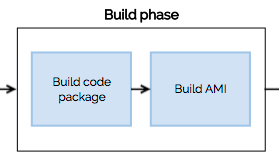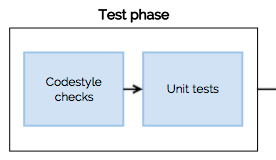Blog tag: Ci-Pipeline-Series
Deployment pipeline, part 3: deployment onto an environment
October 7, 2016 by Paulina Budzoń
The purpose of every deployment pipeline is… a deployment. So this final part of the series, will focus on just that. If you missed the intro, check out the video where I describe a typical pipeline here. You can find the other parts of this series, by checking out the tag ci-pipeline-series .

Once we create an AMI that we’d like to deploy, performing a rolling update on existing instances is fairly easy. Usage of Auto scaling groups and CloudFormation makes it even easier - since AWS Auto scaling groups support the rolling updates out of the box.
Or, if your applications requires blue-green deployments, using CloudFormation is almost essential.
Deployment pipeline, part 2: build phase
October 3, 2016 by Paulina Budzoń
Welcome to the second part of my series on deployment pipelines. If you missed the intro, check out the video where I describe a typical pipeline here. You can find the other parts of this series, by checking out the tag ci-pipeline-series.

After the test phase of the pipeline, once the quality of the code has been checked, we must build a deployable artefact for this version (commit) of the code. In case of AWS, this would be an AMI (Amazon Machine Image), which can then be deployed as a new instance in our environment.
Deployment pipeline, part 1: test phase
September 30, 2016 by Paulina Budzoń
Welcome to the first part of my series on deployment pipelines. If you missed the intro, check out the video where I describe a typical pipeline here.

First step of a deployment pipeline, is usually a series of tests. After a commit is made, the code is checked out from the source code repository and tested. Those are usually code style tests and unit tests.
Typical CI deployment pipeline - overview
September 23, 2016 by Paulina Budzoń
More details on each deployment phase with examples, will be posted at our blog over the coming weeks, so check back soon.



